- Joined
- 3 June 2006
- Messages
- 3,094
- Reaction score
- 3,966
No need for screenshots, since this PowerPoint prestation will be soon available.



Not a whole lot of excess room at Lambert, especially if T-7A will be built there and I am sure that State of Illinois sweetened the $$$ incentives to be at Mid-America.Well, I didn't see this coming. The MQ-25 will be built in Illinois at the Mid-America airport
News Link
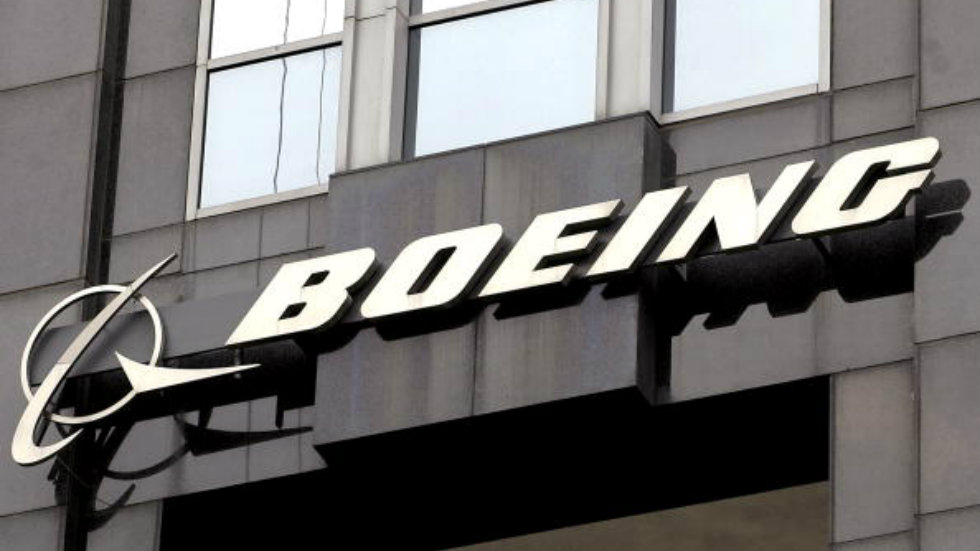
Not a whole lot of excess room at Lambert, especially if T-7A will be built there and I am sure that State of Illinois sweetened the $$$ incentives to be at Mid-America.Well, I didn't see this coming. The MQ-25 will be built in Illinois at the Mid-America airport
News Link
Enjoy the Day! Mark
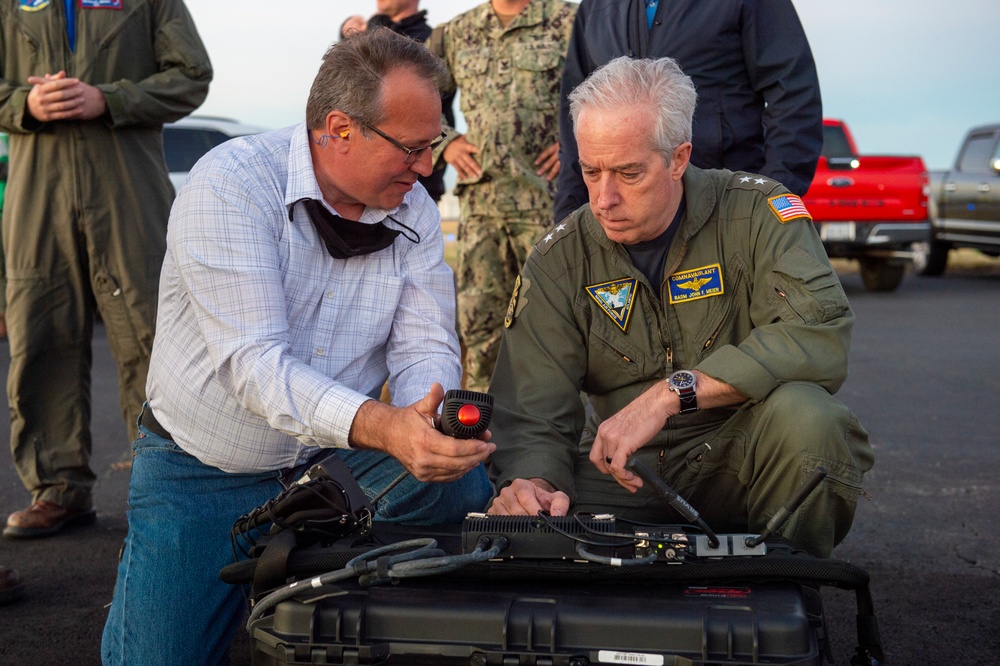
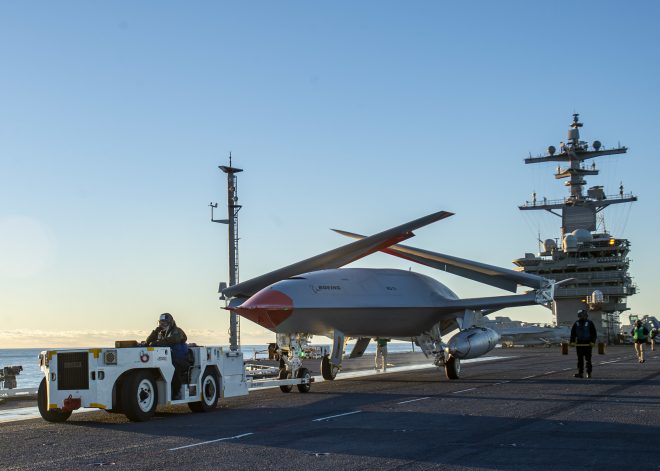
Interesting that the airframe is not a Navy one but still owned by Boeing (N#). That doesn't happen very often....View: https://www.youtube.com/watch?v=ZQMiDALbBdA&t=41s

VIDEO: Navy Wraps Up MQ-25A Deck Handling Tests on Carrier USS George H.W. Bush - USNI News
The prototype for the Navy’s unmanned refueling tanker has wrapped up deck handling tests aboard an aircraft carrier off the East Coast. The service performed tests of the T-1 prototype aboard USS George H.W. Bush (CVN-77) to assess how the aircraft functioned aboard the flight deck in winds of...news.usni.org
Is it because they built it with their own funds for that other UCAV program before they offered it for the MQ-25A program?Interesting that the airframe is not a Navy one but still owned by Boeing (N#). That doesn't happen very often....View: https://www.youtube.com/watch?v=ZQMiDALbBdA&t=41s

VIDEO: Navy Wraps Up MQ-25A Deck Handling Tests on Carrier USS George H.W. Bush - USNI News
The prototype for the Navy’s unmanned refueling tanker has wrapped up deck handling tests aboard an aircraft carrier off the East Coast. The service performed tests of the T-1 prototype aboard USS George H.W. Bush (CVN-77) to assess how the aircraft functioned aboard the flight deck in winds of...news.usni.org
MQ-25 Drone Progressing Toward New Era of Naval Aviation
4/1/2022
By Jon Harper
The Navy’s MQ-25 Stingray drone program racked up major achievements over the past year and is on track to usher in a new era of manned-unmanned teaming.
However, service officials are still pondering whether the aircraft carrier-based tanker will be armed with offensive strike weapons.
In 2018, Boeing was awarded an $805 million engineering and manufacturing development contract to build the Stingray.
Experts say the new unmanned aerial system — the first large, fixed-wing drone that will operate from a ship and support manned planes — will have an outsized impact on the future of naval aviation[...]
The MQ-25 will be different from the iconic drones of the post-9/11 counterterrorism wars, such as the MQ-1 Predator and MQ-9 Reaper, in that it will fly autonomously and not be remotely piloted.
The way the platform operates will be similar to how commercial airlines leverage autopilot capabilities — except there won’t be any humans inside the Stingray, said Dave Bujold, MQ-25 program director at Boeing Defense, Space and Security’s autonomous systems division.
“They’re not hand-flying every stick and throttle move,” he explained in an interview. Instead, the Stingray will use a waypoint system after it is catapulted off a carrier.
“It knows where it’s supposed to go right after takeoff, and it goes there. And then from there, it continues all along its authorized mission,” he said.
Aerial refueling will be “well scripted,” and pilots on the receiving end will have communication links with the ground station overseeing the MQ-25’s mission, just like they have with manned tankers today[...]
A key question that has yet to be answered officially is whether the Stingray will be armed with missiles or other offensive systems — as some lawmakers and other observers have been advocating.
When asked if the Navy is currently considering adding strike weapons or electronic warfare capabilities, Messer said the initial focus is to introduce the platform into the air wing where it can serve its primary role as a tanker and then a “secondary” role as an intelligence, surveillance and reconnaissance platform. However, the MQ-25 “does have payload capacity for mission growth in the future,” he noted[...]
However, “I expect that this platform will become a very versatile multi-mission platform, and I think the Navy gave it away when they named it MQ” with the “M” indicating a multi-mission capability, he said when asked if he anticipates additional payloads will be added to the platform such as ISR systems or strike weapons. “It’s an opportunity space.”
Clark said the Navy is already looking ahead to what the MQ-25 could do beyond tanking.
“I think they will put weapons on them,” he said.
Navy on Track to Deploy MQ-25A Carrier Tanker in 2026 on USS Theodore Roosevelt
By: Sam LaGrone
April 6, 2022 11:02 AM
The Navy’s MQ-25A Stingray unmanned aerial refueling is set to deploy on an aircraft carrier in 2026, a service official said on Tuesday.
Vice Adm. Kevin Whitesell told a panel at the Sea Air Space 2022 symposium that the service was on track to reach initial operational capability for the MQ-25As by 2025 and deploy the aircraft on USS Theodore Roosevelt (CVN-71) by 2026.
The Navy is considering adding more capabilities to the MQ-25As as the tankers work more with the carrier air wing, service officials have told USNI News.
“We kind of went skinny on the initial requirements for this in order to be sure that we’re able to go fast. So MQ-25 is capable of significantly more than we are asking it to do at [initial operational capability]. So at IOC, it needs to be able to operate around an aircraft carrier and be able to conduct aerial refueling and that’s as far as we went,”

The service’s FY23 budget marks the first year buying fully-fledged MQ-25A Stingrays. The J-books’ projections show a steady stream of funding to purchase four aircraft a year, starting in FY23 and running through FY27. (The service’s previous investments have been on solely on research and development efforts as well as prototype aircraft.)
To buy those unmanned aircraft, the service is seeking roughly $720 million per year in procurement funding with the intent to buy a total of 76 planes over the life of the program.

According to Young, there were options for other US services as customers, as well as international customers. However, he would not disclose if there had been conversations with other customers.
The MQ-25 UAV is designed to refuel carrier-based aircraft. The UK, France, and Italy are among allies with aircraft carriers. However, the UK's Queen Elizabeth-class carrier uses a ski-jump capability, which the MQ-25 design does not support.
Naval Air Systems Command, Patuxent River, Md.
The Navy’s Unmanned Carrier Aviation program office (PMA-268) conducted its first lab integration event June 28-30 at Pax River to demonstrate how the MQ-25's Ground Control Station (GCS) will command the unmanned aircraft in the carrier environment.
The government team and its two prime industry partners led the effort at the program’s System Test and Integration Lab (STIL), where Lockheed Martin's GCS controlled Boeing's Hardware-in-the-Loop (HITL) air vehicle for the first time. The HITL utilizes aircraft hardware and software to provide a realistic surrogate for the air vehicle.
“This achievement is the result of weeks of preparation and dedication by highly skilled teams,” said TJ Maday, MQ-25 labs and integration manager. "Bringing multiple systems together is never easy, but the joint government/industry team, coming together, understanding problems and finding solutions made this event successful. We learned how the system works as a whole and that early learning and discovery is key to keep the program moving forward."
Maday said the team set a goal to send a basic command between the GCS and the HITL. In order to meet that objective, Boeing and Lockheed Martin needed to deliver functional software for the government to exercise the GCS, the HITL and the network components allowing connectivity between the systems.
"The team met the initial goal ahead of schedule and used the remaining time to exercise more functionality like sending taxi commands," Maday said. "They also simulated a lost link that verified the proper GCS display indicators, which is a critical function to ensure network connectivity between development environments."
This fall the team plans to simulate a complete flight using the HTIL air vehicle and will also demonstrate switching connections “links” to the aircraft as well as adding other aircraft hardware and software into the mix.
“It’s great to see the combined team working side-by-side, learning and ultimately demonstrating success,” said Capt. Sam Messer, PMA-268 program manager. “This is how we get to IOC [Initial Operational Capability]—we integrate, test, and learn early and at pace.”
The MD-5 GCS is part of the Unmanned Carrier Aviation Mission Control System (UMCS), the system-of-systems required for MQ-25A command and control. UMCS also includes carrier and shore site infrastructure modifications, Navy produced ancillary equipment, and integration with command, control, communications, computers and intelligence (C4I) systems.
The funds will be used to procure initial spare parts and repair equipment for the Stingray, which is poised to become the USN’s first-ever carrier-launched fixed-wing aircraft that operates without a crew. Instead, the MQ-25 is capable of autonomous take-off, flight and landing back on the carrier.
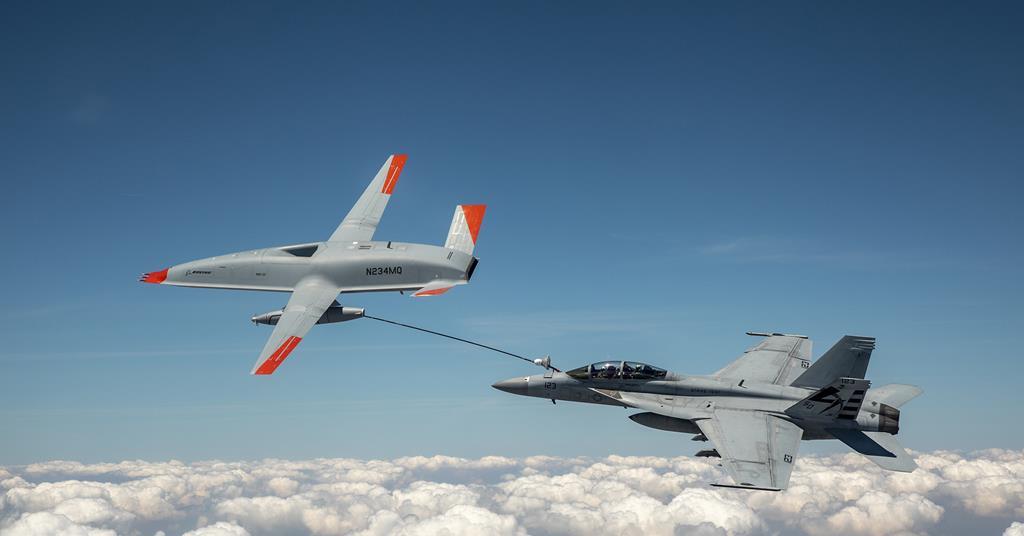

 www.thedefensepost.com
www.thedefensepost.com
Sense and Avoid system for AeroNaval operations (200nm radius):

US Navy Tests New Avoidance Tech for Safer Crewed/Uncrewed Teaming Flight
The US Navy has tested a first-of-its-kind avoidance system 'Guardian' for safer manned and unmanned teaming in congested airspace.www.thedefensepost.com

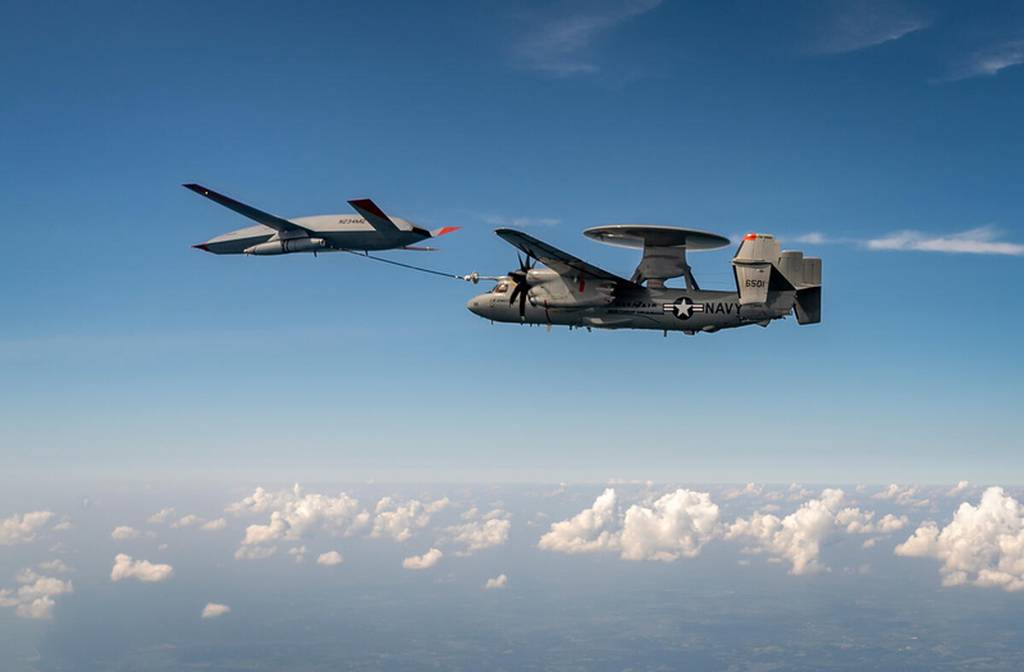
Why didn't they just make their own unit? Drones aren't going anywhere. You'd think they'd have figured that out by now.My big worry is the manning. They handed MQ-25 to the E-2 squadrons...which have no desire for it and therefore plan to recruit dedicated warrant officer operators for them. Meaning that no E-2 pilot or NFO will get "drone cooties" from touching the thing.
Not a way to build a community that will have any staying power. It stands in stark contrast to the MQ-4, which the VP community has embraced (or at least accepted).
U.S. Navy Wants Its Carrier Air Wing 60% Uncrewed | Aviation Week Network
Navy leaders are setting requirements for Collaborative Combat Aircraft to increase the radius of ships, following the MQ-25’s lead.aviationweek.com
Why do I get a strong sense of impending doom here?
Because the USN does not want to move the necessary personnel slots for a new unit, which means they would have to take manpower of those ranks, recode and train them. Recall that you are looking for progressive process in one of the most tradition bound conservative organizations (the U.S. Armed Services) on the planet.Why didn't they just make their own unit? Drones aren't going anywhere. You'd think they'd have figured that out by now.My big worry is the manning. They handed MQ-25 to the E-2 squadrons...which have no desire for it and therefore plan to recruit dedicated warrant officer operators for them. Meaning that no E-2 pilot or NFO will get "drone cooties" from touching the thing.
Not a way to build a community that will have any staying power. It stands in stark contrast to the MQ-4, which the VP community has embraced (or at least accepted).
